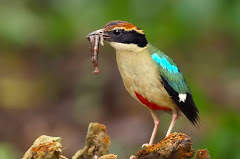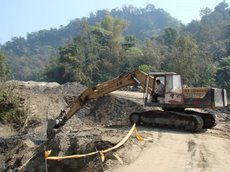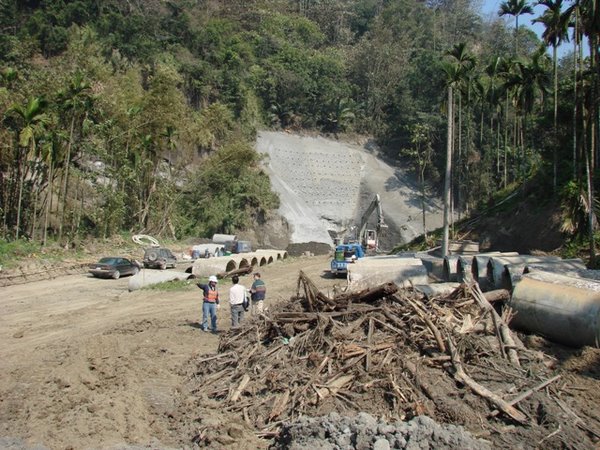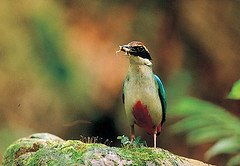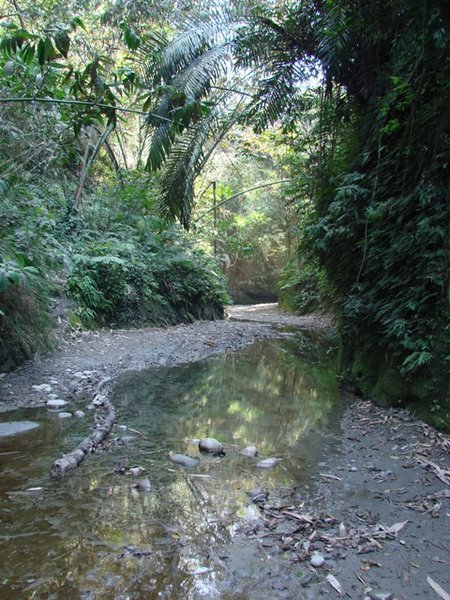The Asia Pacific Green Network Congress 2010 (APGN 2010) kicks off in Taipei this morning. The theme of this year's congress is a Fair Share For A Green Future. The congress is being held from April 30 - May 2at the Tien-Mou Convention Convention Center, located in the northern district of Shi-lin, Taipei. Our colleagues at Wild at Heart Legal Defense Association will be attending the congress.
For details on APGN 2010 click here.
Friday, April 30, 2010
APGN 2010 kicks off in Taipei today
Posted by
Wild at Heart Legal Defense Association
at
11:10 AM
0
comments
![]()
Pink Dolphins at the Urban Nomad Film Fest 2010
The construction of the Hushan Reservoir will have a direct impact on Taiwan's critically endangered Pink Dolphins. The reduced flow of fresh water into the Jhoushui River estuary will further degrade habitat critical to the survival of these dolphins that are on the very brink of extinction. Water from the reservoir will largely be used to develop heavy industry within the little remaining dolphin habitat.
Tonight sees the start of the annual Urban Nomad Film Festival in Taipei. Urban Nomad 2010 kicks off tonight at Armed Forces Cultural Center in Taipei with the Taiwanese premiere of Academy Award-winning documentary The Cove. The Cove will be shown back-to-back with Taiwan's Critically Endangered Pink Dolphins, a short documentary by Christina MacFarquhar of Wild at Heart Legal Defense Association explaining the plight of Taiwan's Pink Dolphins.
Urban Nomad 2010 is working with organizations that want to protect the dolphins and the seas. Both Matsu’s Fish Conservation Union and Wild at Heart Legal Defense Association will be at the gala premiere tonight.
What: The Cove/Taiwan's Critically Endangered Pink Dolphins
When: 7:30pm Friday, April 30, 2010
Where: Armed Forces Cultural Center (°ê?x¤åÃÀ¬¡°Ê¤¤¤ß), 69 Zhonghua Rd, Sec 1, Taipei (¥x¥_¥«¤¤µØ¸ô¤@¬q69¸¹).
Also see today's Taipei Times: Urban Nomad settles in
Posted by
Wild at Heart Legal Defense Association
at
11:00 AM
0
comments
![]()
Tuesday, April 27, 2010
A Policy of Ignoring Wake Up Calls and Unanswered Questions?
I'm sure the 'powers that be' in Taiwan do know where Taiwan is situated. The Pacific Rim, that big ring of fire. It's a well know fact that Taiwan is geologically unstable. Just yesterday morning we all felt the shaking of a 6.6 quake off southeast Taiwan. Shakes and quakes are common here. Today there was a 4.1 in Taitung. Yesterday we had that big 6.6 and the day before we had a 4.7 and a 4.4 on the east coast. The big 7.6 921 Earthquake was just ten years ago.
In addition to the earthquakes we get several typhoons each summer. Last summer Typhoon Morakot left over 600 fatalities in its wake. Poor land management policies contributed greatly to many of the landslides that buried entire villages. Typhoons and quakes are a pretty deadly pair. Surely we know by now that we don't have a very good track record of trying to "manage" nature.
On Sunday afternoon Taiwan's natural fury once again demonstrated what she thinks of our human efforts to tame her. An entire hillside rolled across the No.3 National Freeway between Taipei and Keelung. The entire freeway is closed. This was no small landslide. The entire hillside went 'walkabout' and repositioned itself right across the freeway. Don't take my word for it. Take a look at the Taipei Times photo.
Now, let's move down to central-west Taiwan. Right near the little town of Jiji, the epicentre of the big 7.6 921 Earthquake, the 'powers that be' are merrily constructing the Hushan Reservoir. Yeah, I know you've read the posts on our blog about how the Hushan Reservoir has destroyed much of the most important breeding area on the planet for the threatened Fairy Pitta and a host of other endangered and supposedly protected Red List species that have lived there for time eternal. OK, enough about birds and back to the story.
We're building a big reservoir in the middle of an area highly prone to earthquakes and typhoons. Is that wise? I mean this dam is sitting just off the notorious Jiji fault that showed what it can do in a big 7.6 rumba ten years ago. The 'powers that be' are saying have no fear. But should we? Could there be problems with the mighty Hushan Dam?
Well, we asked the former commissioner of the Environmental Impact Assessment Committee (EIA) who chaired a series of meetings on proposed changes to the Hushan Reservoir plan what he thought about questions on the reservoir's stability. He told us that he with other commissioners ordered the cessation of the project until questions such as this, and the many others that had never been fully or accurately answered during the course of the initial review, were answered. He went on to tell us that the response to their order by officials of the Environmental Protection Administration (EPA) was to tell the developer to ignore the commissioners (despite the fact that the EPA is the secretariat to the commission) and go ahead and build the dam.
Scary to say the least. Can Taiwan really get by on a policy of ignoring wake up calls and unanswered questions and damning the consequences if a quick dollar can be made? Time will surely tell. If I was a betting man my money would be on "they can't !"
See:
Huge hillside collapses, covers Formosa Freeway
Workers scramble to dig out landslide
Posted by
Wild at Heart Legal Defense Association
at
3:14 PM
0
comments
![]()
Monday, April 26, 2010
Hooded Pitta:- a first for Taiwan
On Wednesday 21 April 2010 a Hooded Pitta (Pitta sordida) was sighted in coastal vegetation in the Chigu area of Tainan County. Chigu is the famous wintering site for the threatened Black-faced Spoonbill. The Chigu area is a well known migrant trap in southwest Taiwan. Taiwan's first confirmed record of a Blue-winged Pitta (Pitta moluccensis) was made in the same area last spring. This Hooded Pitta is the first record of the species in Taiwan. This Hooded Pitta appears to be of the Philippine race sordida. Hooded Pitta of race cucullata have been recorded as accidental in Japan. The Taiwan bird clearly lacks the chestnut-brown nape of race cucullata. In addition, the Taiwan bird has the broader upper belly black patch typical of race sordida. Race cucullata has a narrower black "patch" on the belly. Although race sordida is regarded as a resident race rather than migratory, birds of race sordida banded in northern Luzon have been recaptured in peninsula Malaysia.
Click to view photos of this Hooded Pitta on the Nature Campus website. Comments on the Nature Campus website are in Mandarin Chinese.
Posted by
Wild at Heart Legal Defense Association
at
1:41 PM
0
comments
![]()
First Sighting of the Season
 Huben Fairy Pitta (Pitta nympha): photo courtesy of Richard Yu.
Huben Fairy Pitta (Pitta nympha): photo courtesy of Richard Yu.
On the morning of Thursday 22 April 2010 we made the first Huben Fairy Pitta sighting of the season. A pitta was calling from the forest behind the temple at about 7am. As we neared the location we could hear the pitta was moving away from us. A second pitta then started calling from the Pillow Hill side of the valley. We followed the sound of the calling and were able to observe the pitta in the forest edge at the base of Pillow Hill.
Posted by
Wild at Heart Legal Defense Association
at
1:27 PM
0
comments
![]()
Tuesday, April 20, 2010
They're Back !
 A Huben Fairy Pitta (Pitta nympha): photo courtesy of Richard Yu.
A Huben Fairy Pitta (Pitta nympha): photo courtesy of Richard Yu.
They're back ! We received word this morning that a Fairy Pitta was heard calling this morning near the Fairy Pitta Cafe in Huben. Other sightings of Fairy Pitta were made in Taichung County over the weekend. Monitoring of this breeding season will begin. The first international visiting birder of the season is arriving in Huben tomorrow.
Also see:
April marks the return of the Fairy Pitta
Posted by
Wild at Heart Legal Defense Association
at
2:01 PM
0
comments
![]()
Monday, April 12, 2010
Yet another stream gone
If you follow the road (Route 149) that leads into the mountains from the Hushan Dam inlet pipe on the Chingshui River just above Tongtou village (Nantou County) for a few kilometres towards Tsaoling village (Yunlin County) you'll come to what was a pretty little stream with a suspension bridge. This was a lovely spot to stop on the way to Tsaoling and spend some time exploring a lovely mountain stream. Plumbeous Water Redstarts and Grey Wagtails would dart among the rocks. It was a good stakeout point to get a view of the elusive endemic Taiwan Whistling Thrush. On a quite early morning stroll there was always the chance of meeting a majestic Swinhoe's Pheasant. However, the stream as it was for millennia, is no more. Like countless other Taiwan mountain streams it has fallen victim to whims of the powers-that-be that seem hellbent on covering every little brook and creek in lifeless concrete. They say it's to stop erosion. I can't help but notice that tends to be when the erosion problems start and the constant failings of these so-called erosion remedies seems to keep provide some happy local contractor with a never ending supply of maintenance and repair work.
This is yet another prime example of good habitat being destroyed for no apparent reason. This area is the mountain area adjoining the Huben-Hushan IBA. Destruction of mountain riverine habitat above the Huben-Hushan IBA can only accelerate the horrendous ongoing degradation of this area we have witnessed over the past decade.
Posted by
Wild at Heart Legal Defense Association
at
12:07 PM
0
comments
![]()




